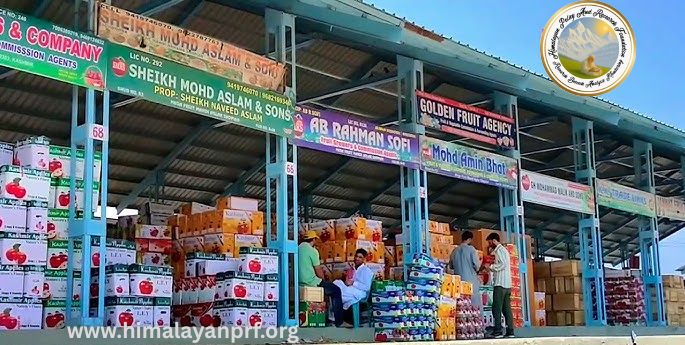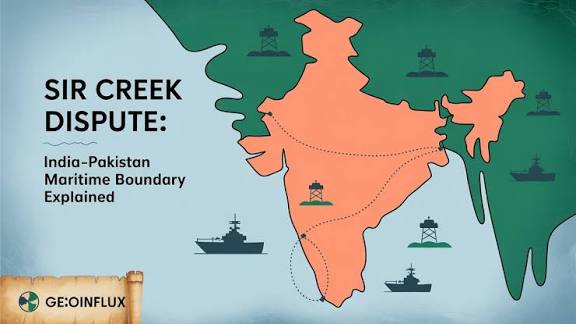By: Peerzada Muneer
Roots and Growth
The horticulture sector is the backbone of Kashmir’s economy, contributing about 6–7% to the Gross State Domestic Product (GSDP) and providing livelihood to nearly 35 lakh people, directly or indirectly supporting around 7 lakh families in Jammu & Kashmir. The area under major horticultural crops has expanded from 3.35 lakh hectares in 2020–21 to 3.45 lakh hectares in 2023–24, with production rising from 22.30 lakh MT to 26.43 lakh MT in the same period. Apples dominate this growth, alongside cherries, pears, peaches, plums, apricots, walnuts, and almonds — much of which is dispatched to over 150 domestic markets and exported to Nepal, Bangladesh, Bhutan, and Sri Lanka, among others. Market linkages have also improved through infrastructure upgrades and digital platforms: 17 of 24 functional mandis in J&K are now integrated with e-NAM, with transactions growing from just ₹0.14 crore to ₹416.39 crore, contributing to total annual revenues of about ₹5,100 crore from fresh fruit and ₹656 crore from dry fruit. In addition, exports in 2023–24 included 13.59 lakh MT of fresh fruit and 0.08 lakh MT of dry fruit. Crucially, the rollout of Controlled Atmosphere (CA) storage facilities, currently at 2.70 lakh MT capacity, with plans to add 25,000 MT immediately and expand to 55,000 MT within five years under HADP, has helped prevent distress sales, stabilized grower incomes, and opened access to premium international markets for Kashmir’s renowned apple varieties (jkdhpm.in).
The fruit mandis of Kashmir have become the central nodes of the Valley’s economic life, hubs where value is aggregated, exchanged, and distributed across the entire horticultural chain. Their evolution from small local collection points into Asia’s largest wholesale fruit yards parallels the transformation of Kashmir’s orchard economy, and today they function as the region’s equivalent of a stock market, shaping fortunes, signalling value, and transmitting risk.
The origins of Kashmir’s fruit mandis lie in the expansion of apple cultivation in the latter half of the twentieth century. As apple orchards spread across Baramulla, Shopian, Pulwama, and Anantnag, growers and traders recognized the inefficiencies of decentralized local sales. This led to the creation of centralized wholesale hubs where grading, auctioning, and dispatch could occur on a scale large enough to service distant Indian and even international markets. The most important of these was the Sopore Fruit Mandi, formally established in 1989 through the efforts of local entrepreneurs and growers who envisioned a dedicated wholesale yard for apples and other fruits (Greater Kashmir).
Over time, Sopore grew into Asia’s second-largest fruit mandi after Delhi’s Azadpur. It is estimated to handle around 40% of Kashmir’s apple production, dispatching over nine lakh metric tonnes of apples in a recent season (2024) and generating nearly ₹6,000 crore in value. On peak days, about 300 trucks loaded with fruit leave Sopore, heading to wholesale markets across India and to neighbouring countries like Bangladesh and Nepal (Kashmir Indepth). Sopore’s scale makes it not only a physical marketplace but a price benchmark for the Valley; its daily rates ripple across smaller mandis.
Alongside Sopore, other mandis developed in Shopian, Pulwama, Parimpora (Srinagar), Anantnag (Bijbehara), and Magam. Pulwama mandi alone recorded a turnover of ₹55 crore from pear and apple sales in one (2024) season (Rising Kashmir). Few years back, Bandipora has been sanctioned a new mandi with an investment of ₹9.25 crore, complete with auction platforms, trader stalls, and cold storage facilities, signalling the state’s attempt to expand this network (Rising Kashmir).
Despite their massive throughput, the mandis face acute infrastructural limitations. Reports consistently highlight that even Sopore mandi, despite being Asia’s second largest, suffers from poor sanitation, inadequate shelter, irregular electricity, and insufficient grading and packaging facilities. Traders and growers have repeatedly protested the lack of basic amenities (Kashmir Life). Constituency reports from Sopore further underline the neglect, pointing to drainage issues, waste disposal problems, and insufficient cold chain support (Rising Kashmir).
Cold storage and controlled-atmosphere (CA) facilities have expanded in recent years but remain insufficient relative to production. As of 2023–24, J&K had about 3.22 to 3.41 lakh metric tonnes of cold storage across 40–89 units (Rising Kashmir, Kashmir Life). Yet annual apple production in J&K averages between 20 and 25 lakh metric tonnes, meaning that the vast majority of produce cannot be stored and must be sold quickly, often at distress prices. Government plans under the Holistic Agriculture Development Program aim to raise capacity to 5 lakh MT, but implementation remains uneven (Greater Kashmir).
Transport bottlenecks add to the fragility of the system. The Jammu–Srinagar National Highway, the Valley’s arterial lifeline, is frequently blocked by landslides, snow, or political disturbances. Each closure halts the movement of trucks, causing spoilage and losses running into hundreds of crores. The mismatch between production and infrastructure results in persistent distress sales. Farmers often have no option but to sell at harvest, even when prices collapse due to oversupply.
Other challenges include poor access to grading equipment, uneven adoption of modern packing, and limited extension services to inform growers of export standards. As a result, large amounts of fruit fail to meet the quality requirements of premium markets. Seasonal oversupply further depresses prices: in 2022 a bumper crop coincided with limited storage and weak demand, pushing carton prices down to unsustainable levels (Hindustan Times).
Despite these systemic weaknesses, the fruit mandis remain vital engines of wealth creation. Sopore alone recorded a turnover of ₹1,300 crore in the 2024–25 season (Rising Kashmir), while combined mandis across the Valley sustain hundreds of thousands of households. They provide direct and indirect employment to growers, packers, transporters, cold store workers, commission agents, and exporters. Even amidst political turmoil, the mandis have managed to function, moving Kashmir’s fruit to national markets and keeping the horticultural backbone intact (The Tribune).
Looking ahead, the prospects of Kashmir’s mandis depend on infrastructural modernization, policy support, and institutional reform. Initiatives like the introduction of parcel trains to bypass highway disruptions (Reuters) and government-backed CA storage units are positive steps. Scholars argue that a systematic expansion of cold chains, better quality control, and digital platforms like e-NAM (National Agriculture Market) could transform mandis into more efficient, transparent marketplaces (ScienceDirect). Simultaneously, cooperative models and farmer-producer organizations could give growers more bargaining power, reducing their dependency on commission agents (Dar 2017).
Markets in Motion
The idea that Kashmir’s fruit mandis are a kind of neo stock market is not just a metaphor but a description of how they operate. In these mandis, the processes of price discovery, speculation, information flow, and risk transmission closely mirror the mechanisms of financial exchanges. From Sopore to Pulwama, growers, commission agents, and buyers engage in daily negotiations that resemble the buying and selling of shares, with fortunes shaped by timing, quality, and access to information.
At the core is the mechanism of price discovery. In Sopore, every morning during the harvest season, hundreds of trucks unload apple boxes. Buyers and commission agents gather around the lots, examine quality, and offer bids. The aggregation of these transactions sets the day’s reference price, which is then disseminated across the Valley, influencing rates in smaller mandis like Shopian and Parimpora. In this sense, Sopore functions as a benchmark index, similar to how the Sensex or Nifty sets a tone for financial markets.
Speculation is deeply woven into the system. Traders often purchase fruit in bulk early in the season, storing it in controlled-atmosphere facilities with the expectation of selling later at higher prices. This hoarding strategy mirrors stock investors holding undervalued shares in anticipation of a rally. For example, growers have complained that large traders with storage access manipulate supply to influence prices, forcing small orchardists to sell quickly at lower rates (Hindustan Times). Such speculative behaviour not only shapes short-term prices but also establishes expectations that ripple across the market.
Just as stock markets rely on brokers, Kashmir’s mandis are dominated by intermediaries. Commission agents facilitate most sales, handling auctions, connecting growers to outside buyers, and often providing credit to farmers in advance of harvest. These advances function like margin loans in equity markets, allowing farmers to cover seasonal expenses but binding them to sell through the same agent at rates set in the mandi. Reports from Srinagar and Sopore highlight how growers, lacking direct access to distant wholesale markets, depend heavily on these agents, who in turn capture significant portions of the value chain (Social Research Foundation).
Market sentiment also plays a crucial role. Prices in Sopore or Shopian fluctuate not only with actual supply and demand but with perceptions about road conditions, weather forecasts, and export orders. A prolonged highway closure sends panic through mandis as trucks stood stranded, triggering distress sales and huge losses (The Hindu). Similarly, rumours of export demand from Bangladesh or fears of competition from cheaper Iranian apples can shift bids dramatically within hours (The Wire). The mandis thus embody the same psychology-driven volatility that makes financial markets swing on rumours, sentiment, and speculation.
The sheer volume of transactions underscores the comparison. Sopore’s dispatch of nine lakh metric tonnes in a single season, valued at ₹6,000 crore, is comparable in scale to daily turnover figures in regional commodity exchanges (Kashmir Indepth). Pulwama’s ₹55 crore turnover from pears and apples illustrates how even smaller mandis serve as critical liquidity nodes, channeling enormous sums in compressed time frames (Rising Kashmir). Like exchanges, these mandis aggregate massive flows of capital and distribute them across participants, sustaining ancillary industries from box manufacturing to transport.
Risks in the mandi system also resemble financial risks. External shocks such as floods, highway blockages, or political unrest can wipe out expected earnings overnight. In September 2025, heavy rains and landslides forced apple growers to dump stocks as transportation routes remained shut, causing crippling losses and sparking protests (Hindustan Times). Growers and traders, much like investors facing a market crash, are left scrambling for mitigation. The introduction of parcel trains for apple dispatch in 2025 is one attempt to diversify logistics and hedge against road risks, but dependence on a single highway remains a systemic vulnerability (The Hindu).
Information asymmetry is another parallel. Large traders and commission agents often have better knowledge about demand trends in Delhi’s Azadpur or Mumbai’s Vashi markets, while small growers base decisions on limited local information. This creates imbalances in bargaining power, with smallholders consistently at a disadvantage. Scholars note that poor access to real-time pricing data and quality standards prevents farmers from capturing fair value, much like retail investors in equity markets who lack insider knowledge (Dar 2017). Efforts to introduce digital platforms like e-NAM are intended to reduce such asymmetries, but adoption has been uneven and slow in the Valley (ScienceDirect).
The global linkages of the mandis strengthen the stock market analogy. Apples dispatched from Sopore and Shopian do not just feed domestic markets but reach Bangladesh, Nepal, and the Gulf, meaning that global demand fluctuations feed back into local pricing. During years when Iranian apples flood Indian markets at lower prices, Kashmir’s growers face depressed bids in Sopore mandi, much like domestic stocks fall when foreign capital withdraws from Indian exchanges.
In addition, systemic issues of cartelization and manipulation persist. Growers frequently allege that traders collude to keep auction prices low during peak arrivals, exploiting the perishability of fruit to buy cheap. Such allegations mirror concerns of insider trading or price-rigging in financial exchanges. Investigations by journalists and researchers confirm that in many cases growers are forced into distress sales while intermediaries reap large margins later in distant markets (Publishing India).
Despite these flaws, the mandis remain indispensable. They provide liquidity, absorb massive seasonal output, and form the backbone of the Valley’s horticultural economy. They act as barometers of regional prosperity, with each season’s mandi turnover reflecting not only the health of orchards but also the wider socio-economic pulse of Kashmir. In this sense, they are indeed stock markets in spirit: high-stakes, sentiment-driven exchanges that concentrate the hopes, fears, and fortunes of an entire region.
Path Ahead
The future of Kashmir’s fruit mandis will determine not only the fate of its horticulture sector but also the economic resilience of the Valley. As hubs where billions of rupees of trade flow each year, they already function like neo stock markets, but their growth is hampered by systemic weaknesses. Addressing these shortcomings with policy reforms and institutional innovation could transform them into transparent, efficient, and globally competitive commodity exchanges.
One of the foremost prospects lies in infrastructure modernization. Scaling up controlled-atmosphere (CA) storages to at least 8–10 lakh MT within the next five years would enable growers to hold produce and release it strategically, much like investors manage portfolios. Government programs under the Holistic Agriculture Development Plan and subsidies for private investors need aggressive implementation and monitoring.
A comprehensive marketing strategy is vital for Kashmir’s horticulture and its fruit mandis, which act as the lifeline of the region’s economy. Despite producing world-class apples, pears, and other fruits, growers often face volatile prices, lack of storage, and limited bargaining power. Without integrated marketing, much of the produce is sold in bulk at low margins, leaving farmers vulnerable. A holistic strategy, combining branding of Kashmiri produce, improved cold chain logistics, digital platforms for real-time price discovery, and stronger farmer–trader linkages, can significantly enhance returns. For instance, India’s horticulture sector already contributes about one-third of the agriculture Gross Value Added (Vision IAS, 2024), yet its full potential remains untapped due to fragmented marketing channels. Leveraging tools like e-NAM, cooperative societies, and farmer-producer organizations, along with export facilitation and GI-based branding, could make Kashmir’s mandis function more like organized agri-markets, ensuring stability, transparency, and value addition for millions dependent on horticulture.
The government’s support to micro–Consumer Stores (CS) can play a transformative role in strengthening Kashmir’s horticulture economy. These small, often community-driven outlets act as the bridge between growers and consumers but remain constrained by poor infrastructure, limited credit access, and lack of modern storage facilities. With horticulture contributing over 355 million tonnes of produce annually in India (Vision IAS, 2024), Kashmir’s micro CS stores, if supported, could become hubs for efficient aggregation, grading, packaging, and direct retailing of fruit. The government could implement this by offering subsidized cold storage units, concessional loans, training programs in marketing and quality control, and linking these outlets with digital platforms like e-NAM for wider reach. Such interventions would not only reduce post-harvest losses but also empower small traders, stabilize farmer incomes, and help Kashmir’s fruit mandis evolve into modern supply chains with both local and export potential.
Introducing fruit-juice and fruit-based non-alcoholic beverage units in Kashmir is a natural, high-impact route to convert seasonal surpluses and low-grade fruit into shelf-stable, higher-value products: cutting losses, creating local jobs and anchoring year-round demand for orchard produce. Kashmir already has a growing processing footprint: the Sopore fruit mandi area alone has seen the establishment of around 17 food-processing units, including a dedicated 10,000-MT-per-year apple-juice plant, and reporting suggests a cluster of roughly 20 or so juice/crush units scattered across the Valley and Jammu that are actively operating or being ramped up (Rising Kashmir, The Apple Crush).
To scale this, the government should target three levers: (1) finance & incentives: push schemes such as the PM Formalisation of Micro Food Processing Enterprises (PM-FME) and targeted subsidies for fruit-juice micro-units, pack-houses and cold-chains; (2) infrastructure & market linkages: support common-use pre-cooling, cold storage, and box-making (already being added around Sopore) and integrate processors with e-NAM / procurement channels to guarantee offtake; and (3) technical support & easing of compliance: provide on-site training in HACCP/food safety, help with branding/packaging, and fast-track licensing for non-alcoholic beverages so micro and small units can formalize quickly. These policy actions are already being promoted in J&K’s horticulture and industries plans and match central schemes for micro food processors (jkdhpm.in).
The payoffs are clear: better processing capacity converts category-C and surplus fruit into juice concentrates, ready-to-drink beverages and blended products — reducing seasonal glut and spoilage, generating rural and peri-urban employment, and raising farmers’ farm-gate realisations through forward linkages to branded products and institutional buyers. In short, a coordinated push for juice and non-alcoholic fruit beverage units would strengthen Kashmir’s mandis from being episodic bulk-outlets into the backbone of a year-round, value-added horticulture economy (Brighter Kashmir).
Logistics is another critical reform area. Highway disruptions have repeatedly crippled mandi operations, with apple boxes dumped in ditches due to prolonged closures. Strengthening the dedicated parcel train service for apples, along with developing an alternative all-weather route and greater reliance on air cargo for premium exports, can diversify transport risk. Such redundancy is essential for resilience, just as stock markets rely on backup trading systems to prevent crashes.
Digital transformation is equally urgent. While Sopore has begun experimenting with e-NAM integration, uptake has been slow due to limited digital literacy among growers. Expanding digital auction platforms, mobile-based real-time price dissemination, and blockchain-enabled contract enforcement would reduce information asymmetry. Growers, armed with transparent price data from Azadpur or Bengaluru, would be less vulnerable to manipulation by commission agents. Investment in rural digital infrastructure and training programs should therefore be central to policy design.
Another pressing reform is institutional. Commission agents dominate mandi trade, but their practices often disadvantage small farmers who depend on credit advances tied to compulsory sales. Establishing farmer-producer organizations (FPOs) can rebalance power, allowing growers to pool resources, negotiate collectively, and even directly access metropolitan mandis. Case studies from Himachal and Maharashtra show that FPO-led direct marketing reduces intermediary margins and enhances farmer share in consumer rupees. Adapting this model to Kashmir could democratize mandi operations.
Quality control and value addition are also crucial. At present, large volumes of Kashmiri apples fail to meet premium export standards due to uneven grading and packaging. Establishing modern grading lines, pack houses, and GI branding initiatives can help position Kashmiri apples as a high-value commodity, much like Himachal’s branded varieties. Linking mandis with food-processing clusters, juice, jam, and cider industries, can absorb lower-grade fruit, stabilizing prices and creating non-seasonal demand.
Policy interventions must also address external risks. The surge of cheaper Iranian apple imports into India has undercut Kashmiri growers, lowering bids in mandis like Sopore. Temporary import restrictions, minimum support price (MSP) mechanisms for apples, or buffer stock policies could stabilize farmer incomes during such shocks. Just as financial regulators intervene to prevent extreme volatility in equity markets, agricultural policymakers must create safety nets for growers whose livelihoods are tied to mandi performance.
Environmental resilience is another long-term priority. Climate change is altering snowfall, rainfall, and pest cycles, threatening the Valley’s apple output. Mandis must prepare for this by diversifying fruit portfolios beyond apples to pears, cherries, walnuts, and emerging crops like kiwi. This diversification, supported by crop insurance schemes, would distribute risk across commodities, much as investors hedge portfolios to withstand shocks.
Importantly, sanitation and basic amenities cannot be overlooked. Reports note that Asia’s second-largest mandi in Sopore still lacks proper drainage, waste management, and electricity supply (Kashmir Life). Upgrading these facilities would not only improve hygiene and efficiency but also enhance Kashmir’s credibility with outside buyers, strengthening its reputation in national and global supply chains.
Finally, policy must recognize mandis as more than transactional sites; they are social and cultural hubs. They sustain networks of trust, kinship, and generational knowledge that cannot be replaced by mere digitization. Reform should therefore balance modernization with community ownership, ensuring that growers remain at the center of any transformation. Involving local stakeholders in decision-making about infrastructure projects, digital platforms, and pricing mechanisms will be essential to prevent alienation and ensure adoption.
In sum, the fruit mandis of Kashmir stand at a crossroads. On one hand, they already mirror the workings of stock markets, centralized price discovery, speculative behaviour, and vulnerability to external shocks. On the other, they remain plagued by infrastructural gaps, market manipulation, and systemic risks. By scaling cold storages, diversifying logistics, digitizing auctions, empowering FPOs, branding Kashmiri apples, and insulating growers against global competition, these mandis can evolve into fully functional commodity exchanges. If implemented with vision and urgency, such reforms would not only transform horticulture but also turn Kashmir’s fruit economy into a globally competitive sector, resilient to shocks and fairer to its growers.
Thus, the neo stock market of Kashmir, the fruit mandi, is both a symbol of the Valley’s economic vitality and a testing ground for its policy imagination. Whether it matures into a transparent, resilient institution or remains an overstretched wholesale yard will depend on the reforms undertaken today.










